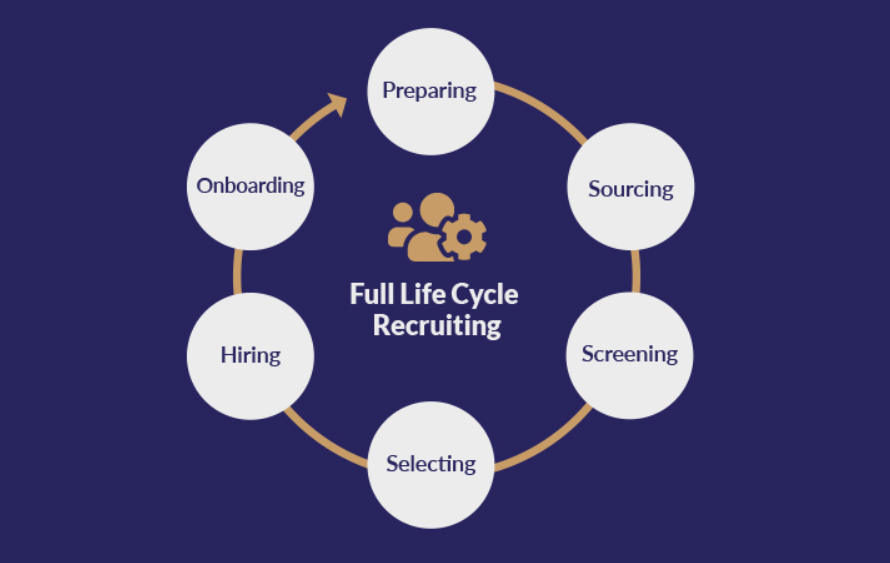Step-by-Step Guide to Full Cycle Recruiting
1. Understanding Job Requirements
Objective: Gain a thorough understanding of the job role and requirements.
Meet with Hiring Managers: Discuss the job description, required skills, experience, and qualifications.
Define Role Objectives: Understand the key objectives and responsibilities of the position.
Identify Success Criteria: Determine what success looks like in this role.
2. Sourcing Candidates
Objective: Attract and find potential candidates for the job.
Use Job Boards: Post the job on various job boards and company website.
Leverage Social Media: Use LinkedIn, Twitter, and other platforms to reach out to potential candidates.
Network: Attend industry events and leverage professional networks.
Employee Referrals: Encourage current employees to refer qualified candidates.
3. Screening Resumes
Objective: Identify the most promising candidates from the applicant pool.
Review Applications: Assess resumes and cover letters for relevant experience and skills.
Use ATS: Utilize Applicant Tracking Systems (ATS) to manage and filter applications.
4. Conducting Initial Interviews
Objective: Evaluate candidates' qualifications and fit for the role.
Phone Interviews: Conduct initial phone screenings to assess basic qualifications and interest.
Video Interviews: Use video calls for more in-depth discussions if needed.
5. Conducting In-Depth Interviews
Objective: Further evaluate candidates' skills, experience, and cultural fit.
Structured Interviews: Conduct face-to-face or video interviews using a consistent set of questions.
Panel Interviews: Include multiple team members to assess the candidate from different perspectives.
Technical Assessments: Administer tests or assignments to evaluate specific skills.
6. Checking References
Objective: Verify candidates' work history and qualifications.
Contact References: Speak with previous employers or colleagues to confirm the candidate's past performance and work ethics.
Verify Credentials: Check any necessary certifications or qualifications.
7. Making the Job Offer
Objective: Extend an offer to the selected candidate.
Prepare Offer Letter: Include salary, benefits, job title, and start date.
Negotiate Terms: Be prepared to discuss and negotiate terms if necessary.
Formalize Acceptance: Ensure the candidate formally accepts the offer in writing.
8. Onboarding
Objective: Integrate the new hire into the company smoothly.
Prepare Onboarding Plan: Develop a plan that includes training, introduction to team members, and initial projects.
Set Up Workstation: Ensure all necessary equipment and access are ready for the new hire’s first day.
Provide Orientation: Introduce the company culture, policies, and procedures.
Key Benefits of Full Cycle Recruiting
Consistency: Ensures a consistent candidate experience and communication.
Accountability: A single point of contact for both candidates and hiring managers improves accountability.
Efficiency: Streamlines the process, reducing time-to-hire.
Quality: Enhances the quality of hires by providing a holistic view of each candidate.
Conclusion
Full cycle recruiting encompasses all stages of the hiring process, from understanding job requirements to onboarding new employees. By managing the entire process, recruiters can ensure a seamless, efficient, and effective recruitment experience for both candidates and the organization.

What Is Full Cycle Recruiting? A Step-by-Step Guide
- Home
- 2024-05-20 00:29:47
- What Is Full Cycle Recruiting? A Step-by-Step Guide
You can share this story by using your social accounts: